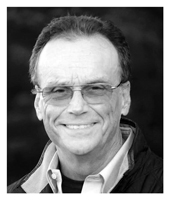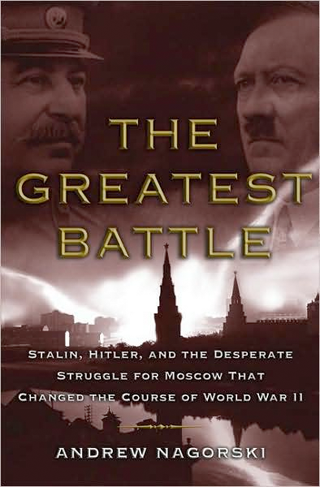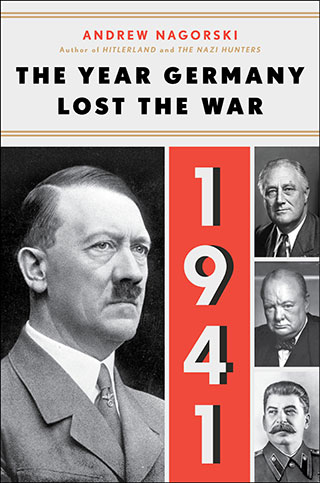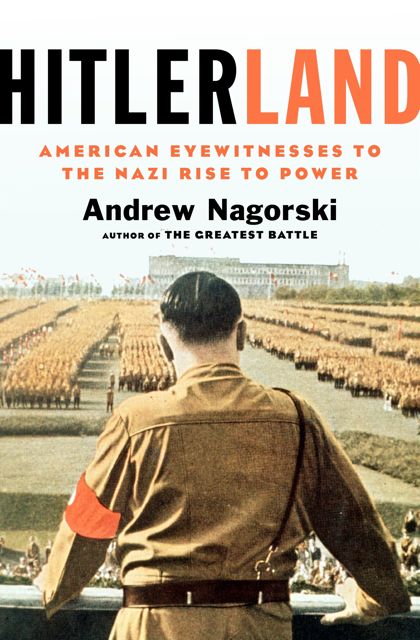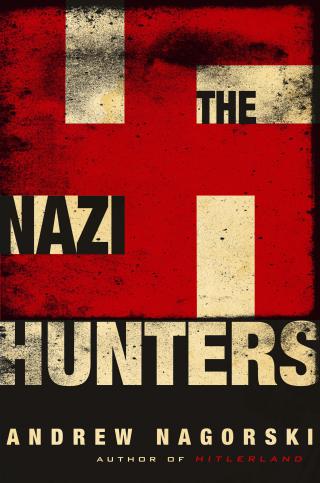BY ANDREW NAGORSKI 1/15/95
Even in the silence of the Polish countryside, Auschwitz cannot rest in peace. The name alone prompts instant recognition -- a shorthand for the criminal barbarity of the 20th century. If ever there were a place in which myth was unseemly and unnecessary, where fact could be left unadorned, it would be Auschwitz. For 50 years, that has not been the case.
The list of myths and misconceptions about the largest Nazi concentration camp is a long one. Soviet investigators declared in May 1945 that 4 million people had died in Auschwitz, and the Polish Communist authorities stuck to this inflated figure until they lost power in 1989. Since then the number has been revised to between 1.1 million and 1.5 million, which most historians now believe is accurate. Until the Soviet bloc fell, the exhibits at Auschwitz downplayed the number of Jewish victims, suggesting that their part of the total was smaller than the 90 percent figure generally accepted today. In the West, many erroneously believed that the camp was created to murder Jews, and that Auschwitz was the primary killing ground for Polish Jews. The facts are more complex.
A former army barracks located near the town of Oswiecim, or Auschwitz in German, the main camp received its first transport of 728 Poles in June 1940. These were political prisoners, usually affiliated with resistance movements. In most cases, they were Catholics, since the deportations of Jews had not yet begun. But as soon as those first prisoners arrived, they were treated to a speech that signaled the future evolution of the camp. "You have come not to a sanatorium but to a German concentration camp where the only way out is through the chimney," Karl Fritsch, the SS chief in charge of the prisoners, declared. "If someone doesn't like it, he can throw himself on the barbed wire. If there are Jews in the transport, they don't have the right to live more than two weeks; priests, one month, and the others, three months."
"The camp was created to destroy the most valuable part of Polish society, and the Germans partly succeeded in this," says Zygmunt Gaudasinski, an early political prisoner there. Some prisoners, like Gaudasinski's father, were shot; torture was commonplace, and the early mortality rate was very high. That changed once prisoners latched onto jobs -- in the kitchens, warehouses and other sheltered places -- which increased their odds for survival. Of the 150,000 Polish prisoners who were sent to Auschwitz, about 75,000 died there.
After Germany invaded the Soviet Union in June 1941, Soviet POWs were dispatched to Auschwitz. SS Chief Heinrich Himmler envisaged a huge number of POWs and drew up plans for Auschwitz's expansion by creating a second large complex at Birkenau, two miles away. The first POWs to arrive were put to work constructing the new facilities there in conditions that horrified even the hardened Polish political prisoners. "They were treated worse thanany other prisoners," says Mieczyslaw Zawadzki, a Pole who worked as a nurse in a sick bay for the POWs. Fed only turnips and tiny rations of bread, they collapsed from hunger, exposure and beatings. "The hunger was so bad that they cut off the buttocks from the corpses in the morgue and ate the flesh," Zawadzki recalls. "Later, we locked the morgue so they couldn't get in."
With most Soviet POWs dying quickly and no large subsequent influx, Himmler and camp commandant Rudolf Hoss prepared Auschwitz to play a major role in the "final solution" for European Jews. Transports of Jews from all over occupied Europe made Auschwitz the most international of the camps. By the time that Birkenau and its gas chambers became fully operational, most Polish Jews had already died in other death camps like Treblinka, Sobibor and Belzec. About 300,000 Polish Jews were deported to Auschwitz, followed, in the summer of 1944, by an astonishing 438,000 Hungarian Jews. Auschwitz was both a death camp and a complex of labor camps, which accounts for its relatively large number of survivors. If Treblinka and other pure death camps are less well known, it is because there were almost no survivors who could testify to what happened there.
News of Auschwitz's horrors began to spread well before the war ended. Often with the help of resistance groups, some Auschwitz prisoners managed to escape and get out word about the mass killingsin the camp. Two main eyewitness documents appeared in 1944. One was written by a former Polish political prisoner, Jerzy Tabeau, who, with another prisoner, short-circuited the camp's electric fence, cut through the barbed wire and fled to Cracow. His report was circulated by the London-based Polish government-in-exile. The other shocking report was produced by two Slovak Jews whose detailed descriptions of mass gassings reached Jewish groups and Western governments.
Even a half-century later, their cries for help are searing. In his "Report of a Polish Major," Tabeau described the torture of Polish political prisoners, the murder of sick inmates with phenol injections and "the mass murder of Jews" in Birkenau. Although most Polish political prisoners remained in the original Auschwitz camp, Tabeau was transferred to the Gypsy camp in Birkenau where he could directly observe what was happening. Tabeau, now a retired cardiologist in Cracow, recalls: "From the Gypsy camp, you could clearly see the ramp and the transports arriving. The people were marched to the crematoria, and two or three hours later there was this black smoke. When the crematoria could not keep up, you could see piles of burning corpses."
In the postwar era, the Soviet and the Polish Communist authorities imposed their ideological vision on Auschwitz, condemning fascism and extolling the heroism of Communist prisoners. Among the national pavilions set up in the 1950s, the most jarring were those of East Germany and Bulgaria -- in the latter case, a country that did not have a single prisoner at Auschwitz. "Four million victims" was such a part of the authorities' litany that they refused to acknowledge mounting evidence that this early estimate, based in part on the misleading testimony of camp commandant Hoss, was wrong. "If it hadn't been for the political changes in 1989, I don't think our research would have been published," says Auschwitz Museum historian Franciszek Piper, whose study of Jewish deportations produced the new estimates.
In the late 1980s a dispute between Catholics and Jews about a Carmelite convent bordering on Auschwitz triggered angry accusations that each side was refusing to acknowledge the symbolism of Auschwitz for the other. To ease such tensions, Poland's new Solidarity government set up an international council for the camp museum in 1990 composed of Christians and Jews. Although critics charge that the pace is too slow, Auschwitz has changed dramatically since then. The East German and Bulgarian pavilions were closed, and signs all over Auschwitz -- in particular, at the site of the gas chambers in Birkenau -- were changed to emphasize that most of the victims were Jewish.
Such changes have helped. "We have to say and say again that the majority of Auschwitz's victims were Jews, but that doesn't make Auschwitz ours," says council member Maurice Goldstein, a Belgian Jew who also heads the largest survivors' organization. "We should not Judaize Auschwitz." In the new climate, different groups can finally recognize each other's claims to the Auschwitz legacy, no longer fearing that this somehow diminishes their own suffering.
SIDEBAR
He survived Auschwitz through the help of Poles, only to be broken by his Soviet countrymen. Soon after 600 other Soviet POWs and 250 Polish political prisoners became the first inmates to be gassed -- in September 1941 -- Nikolai Pisarev was assigned to work at the railroad station in the town. As his crew unloaded sand one day, they discovered bread, boiled potatoes and cigarettes -- hidden for them there by Jan Cwiklicki, a Polish railroad worker. Cwiklicki later warned, "You'd better try to escape. Or you'll be killed."
As winter approached in 1942, word passed among the Soviets that they would make a run for it. Pisarev recalls a shout, "For the homeland!" Some prisoners attacked the guards; others bolted into the nearby forest. "I was crawling along a dug-up potato field . . . they started shooting, and killed my friend," says Pisarev. But he jumped a freight train, received food from Polish schoolchildren and clothes from lumberjacks, and headed for Cracow. One frigid day he sought shelter in a railroad station. The Germans found him, asleep. Pisarev claimed he had slipped off a train carrying Polish forced laborers to Germany, but knew his camp tattoo would betray him. A Pole connected to the resistance shared his holding cell, and somehow smuggled in a needle and ink. He covered Pisarev's number with an eagle tattoo. Pisarev survived the war in a Polish forced-labor brigade.
After liberation he returned to Moscow, where the KGB tortured him for a month -- Stalin suspected returning POWs were traitors. Pisarev, 76, has been unable to win a military disability pension, despite his injuries. "God forbid the kind of life I've led," he says.
© 2015 NEWSWEEK LLC
